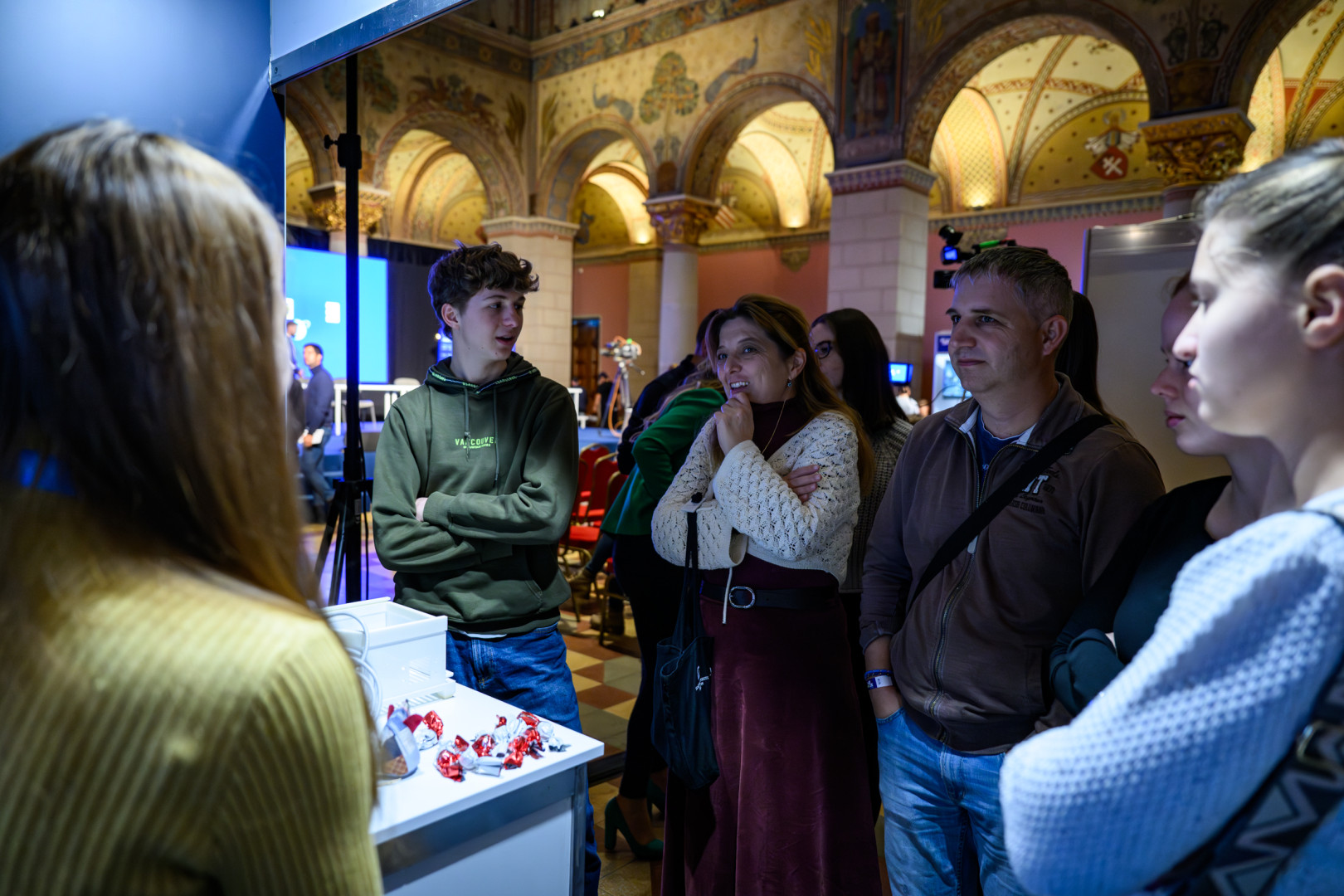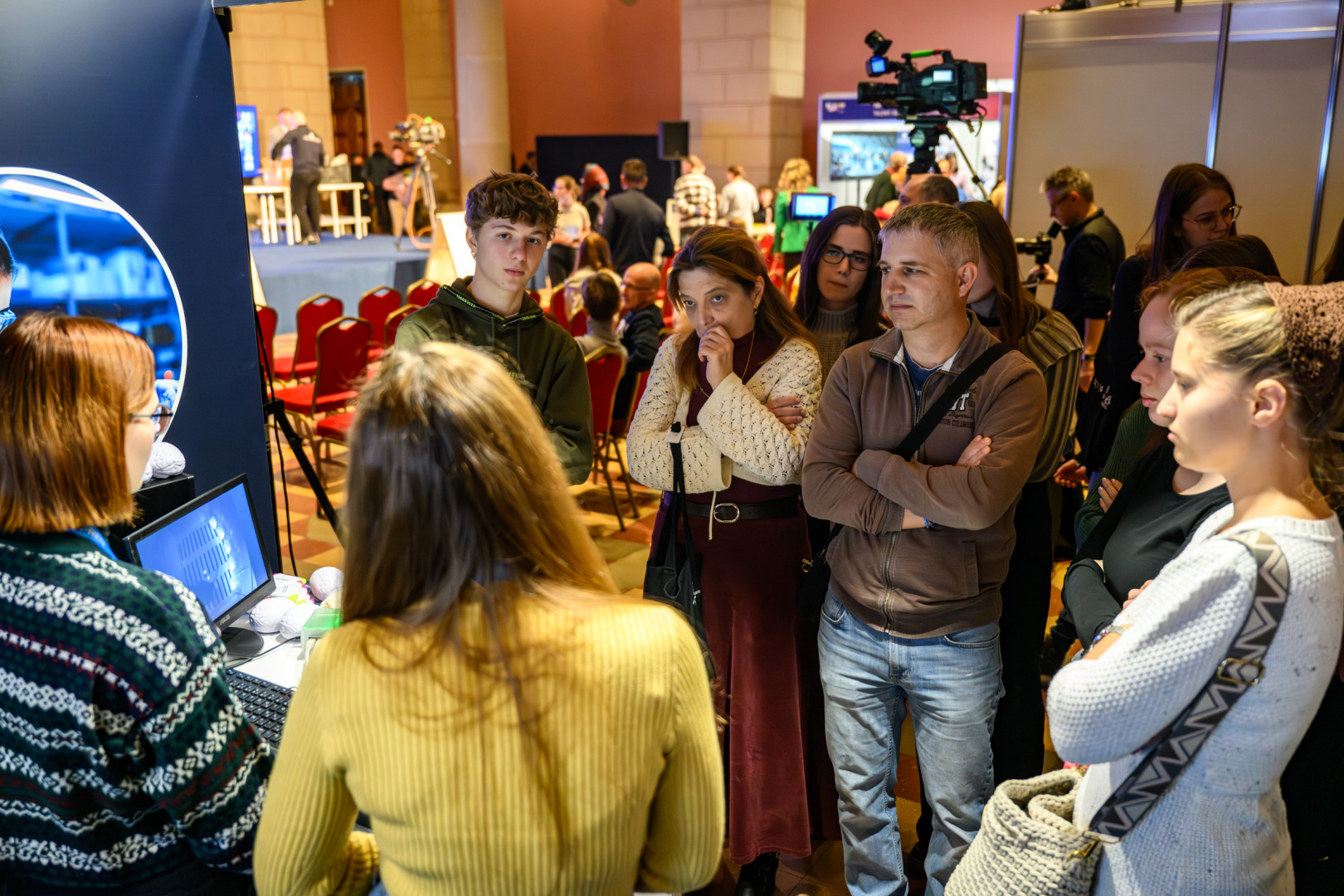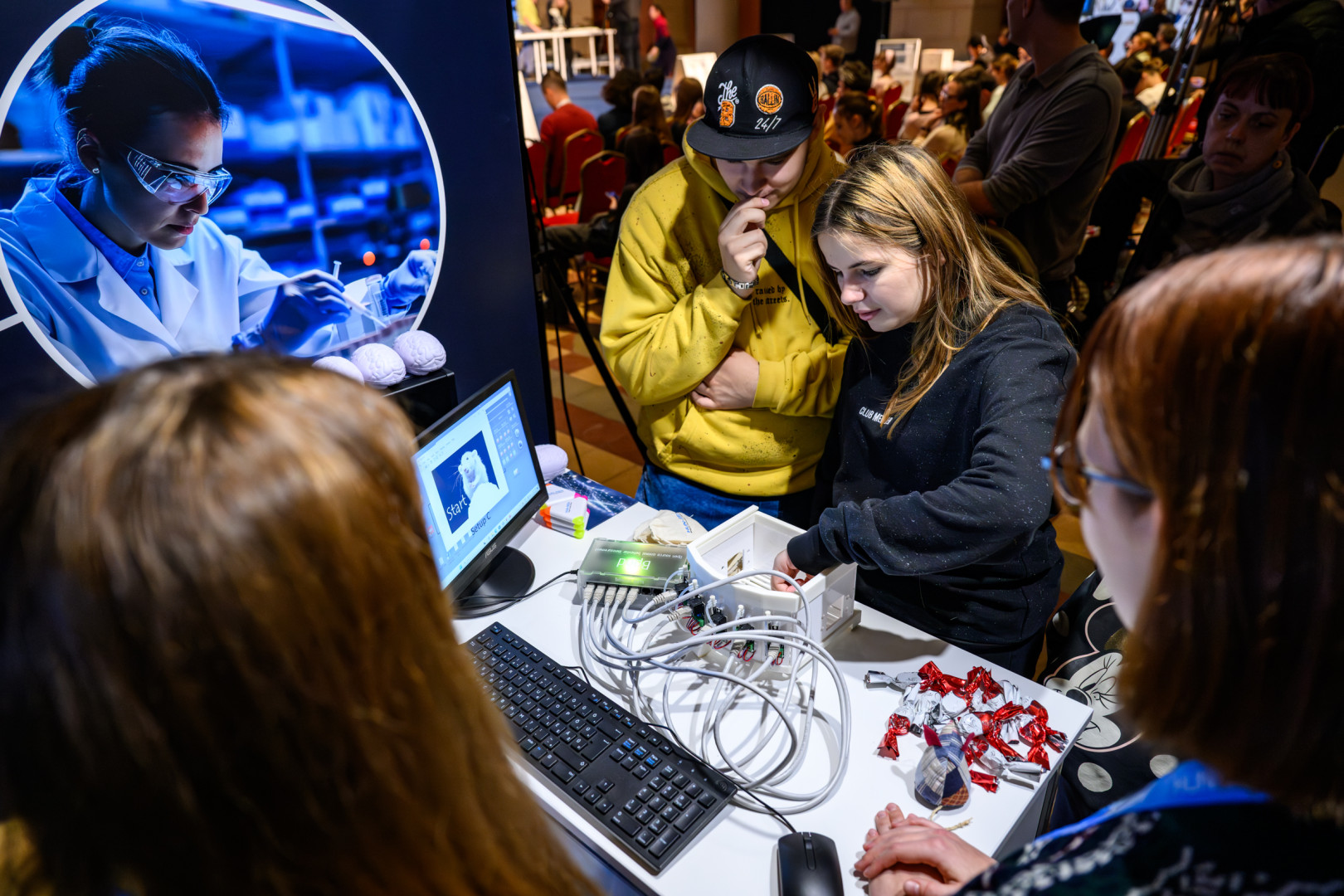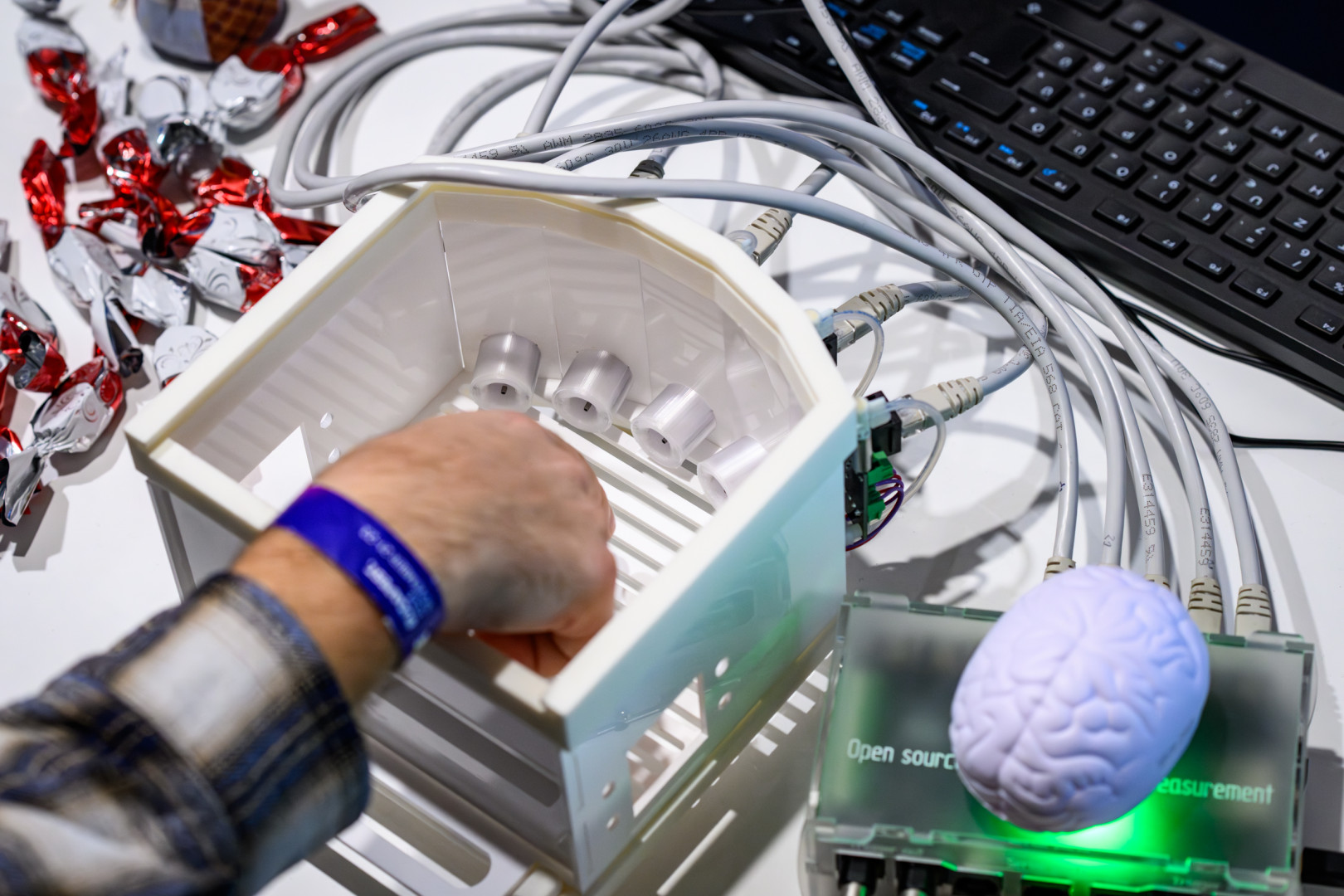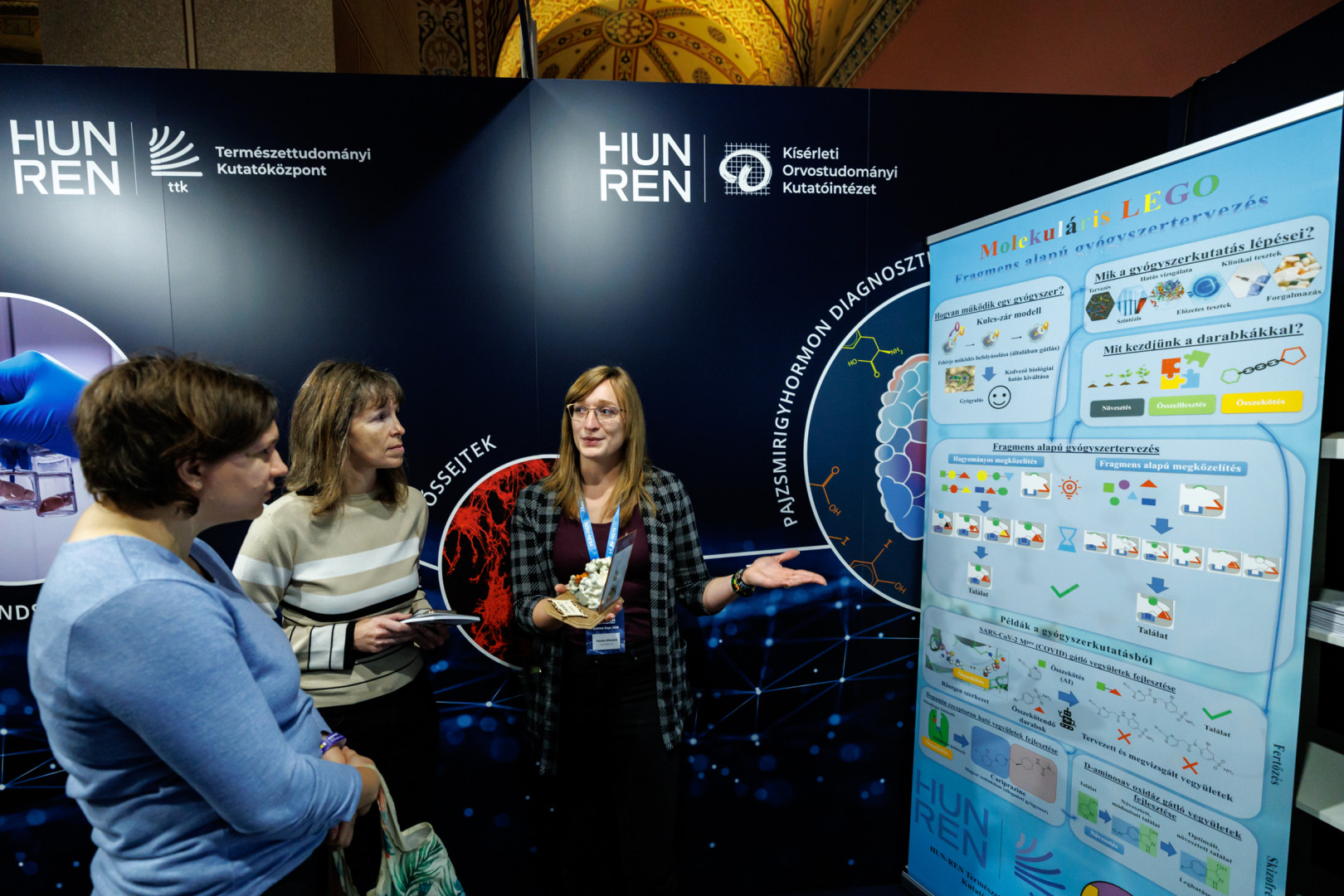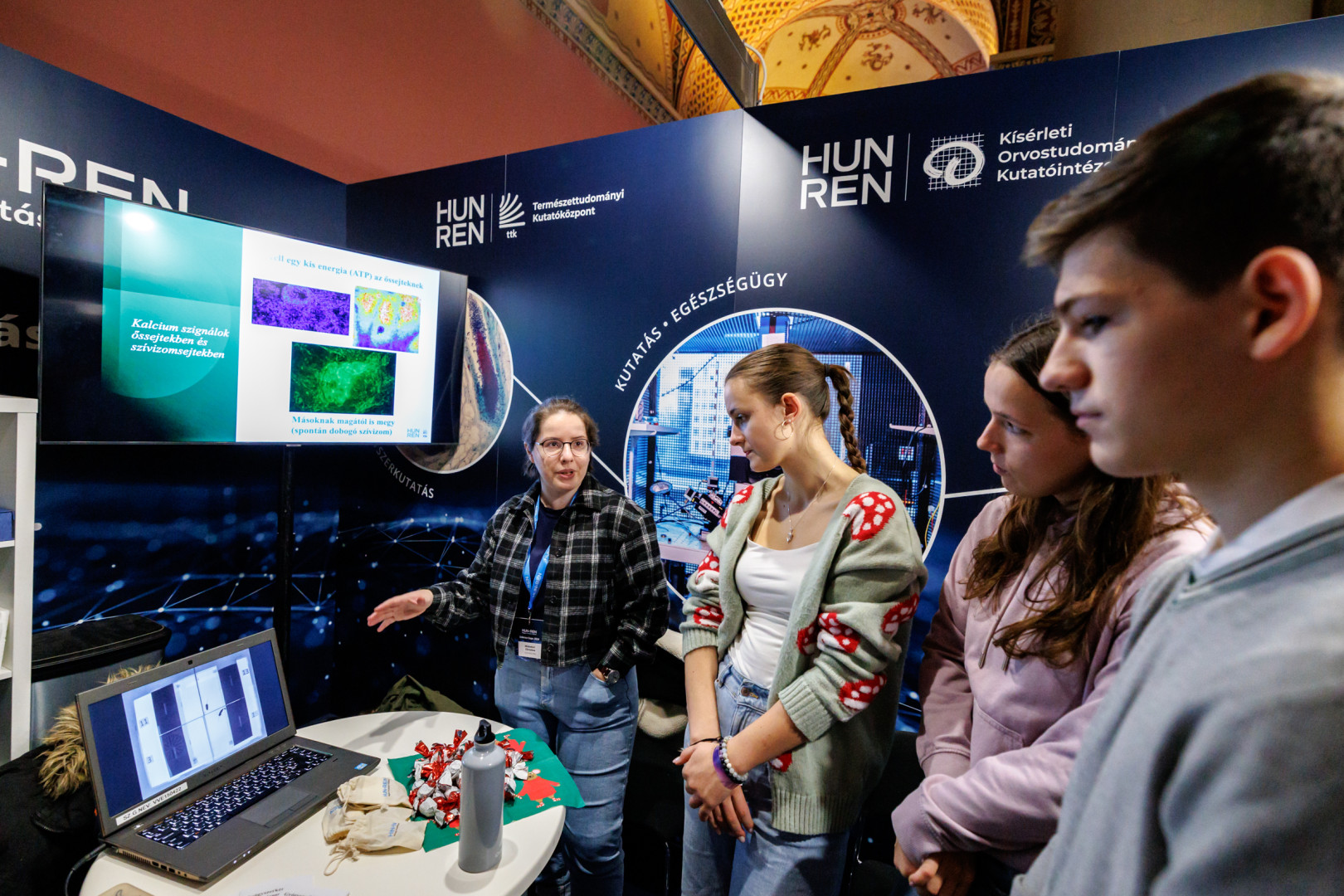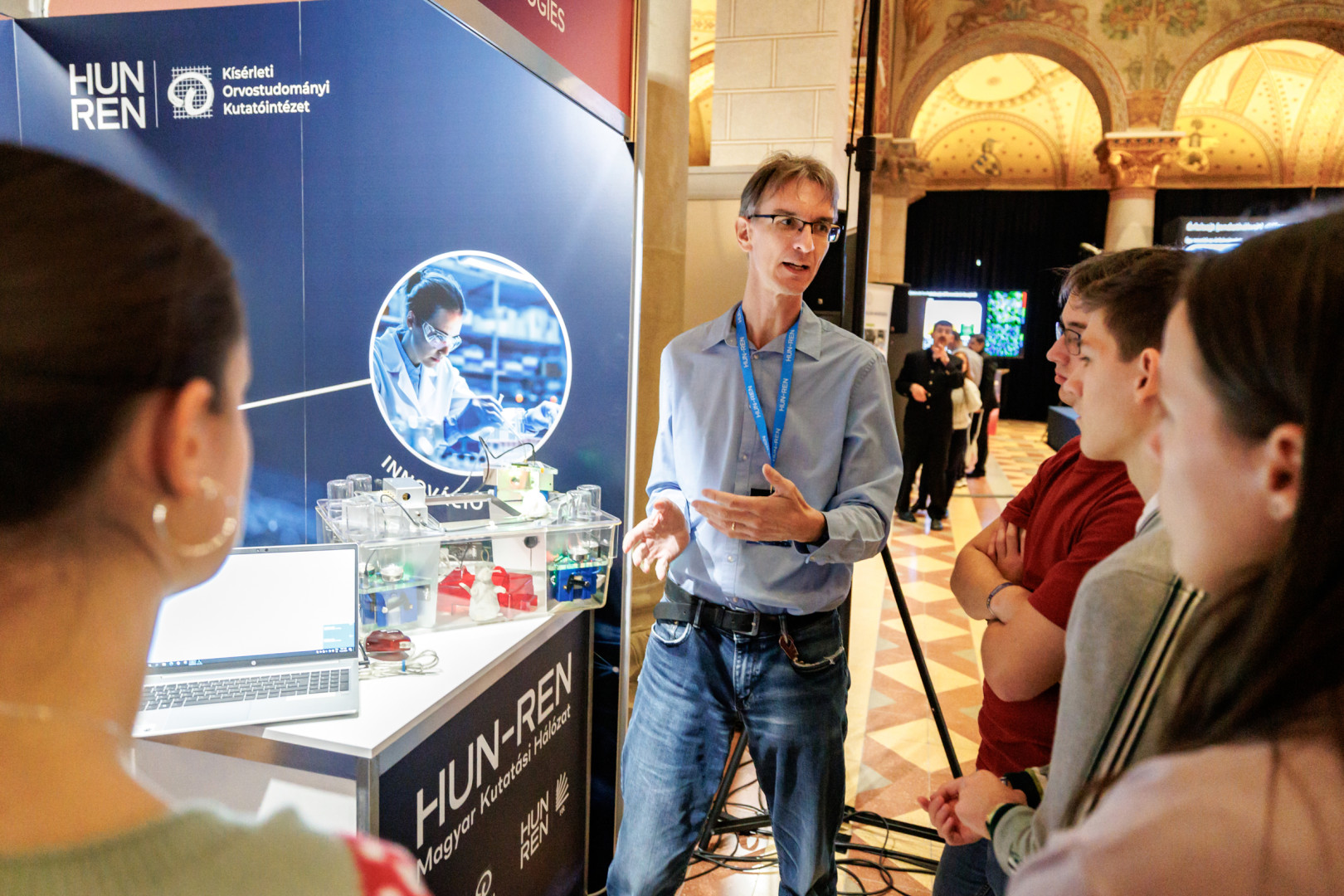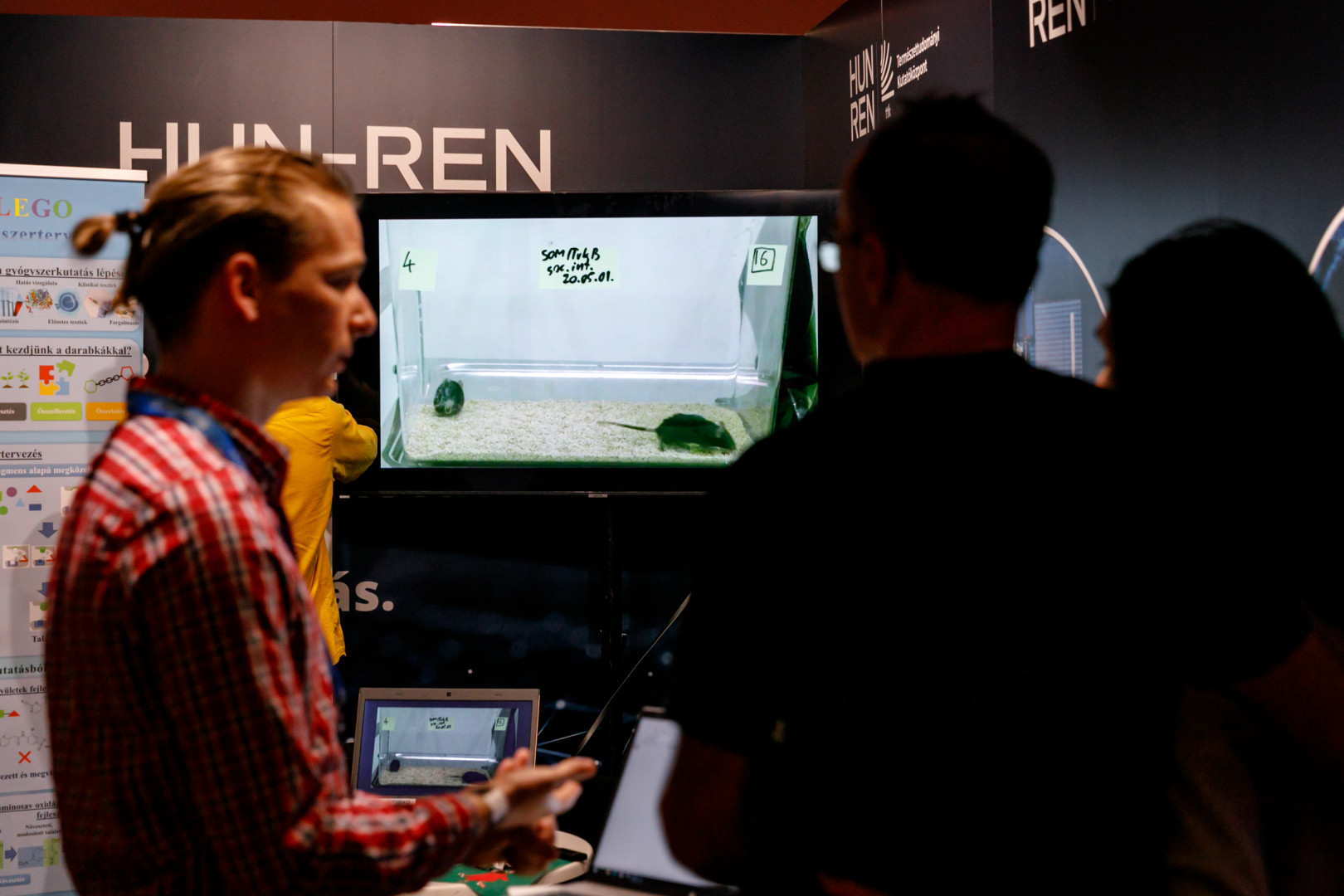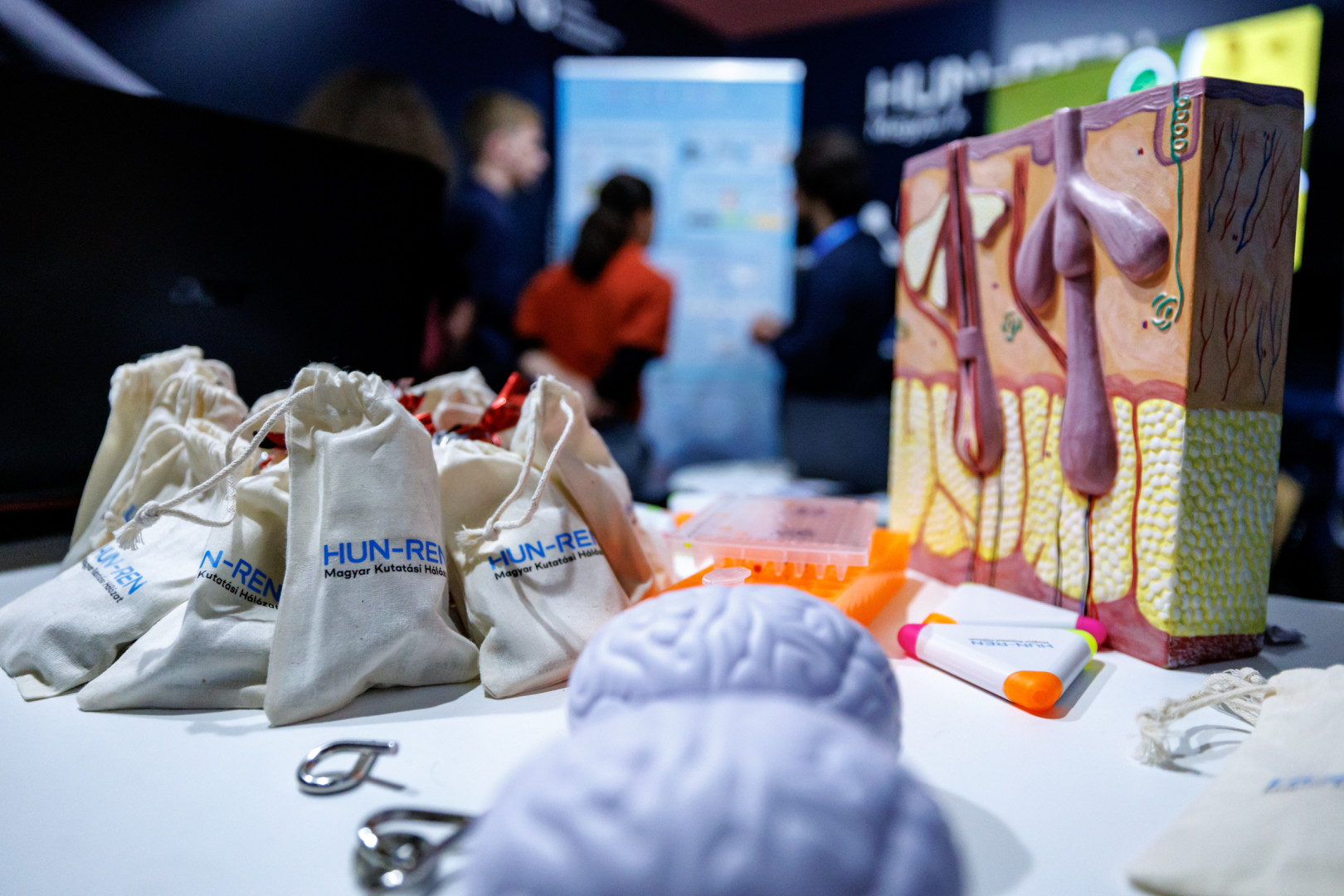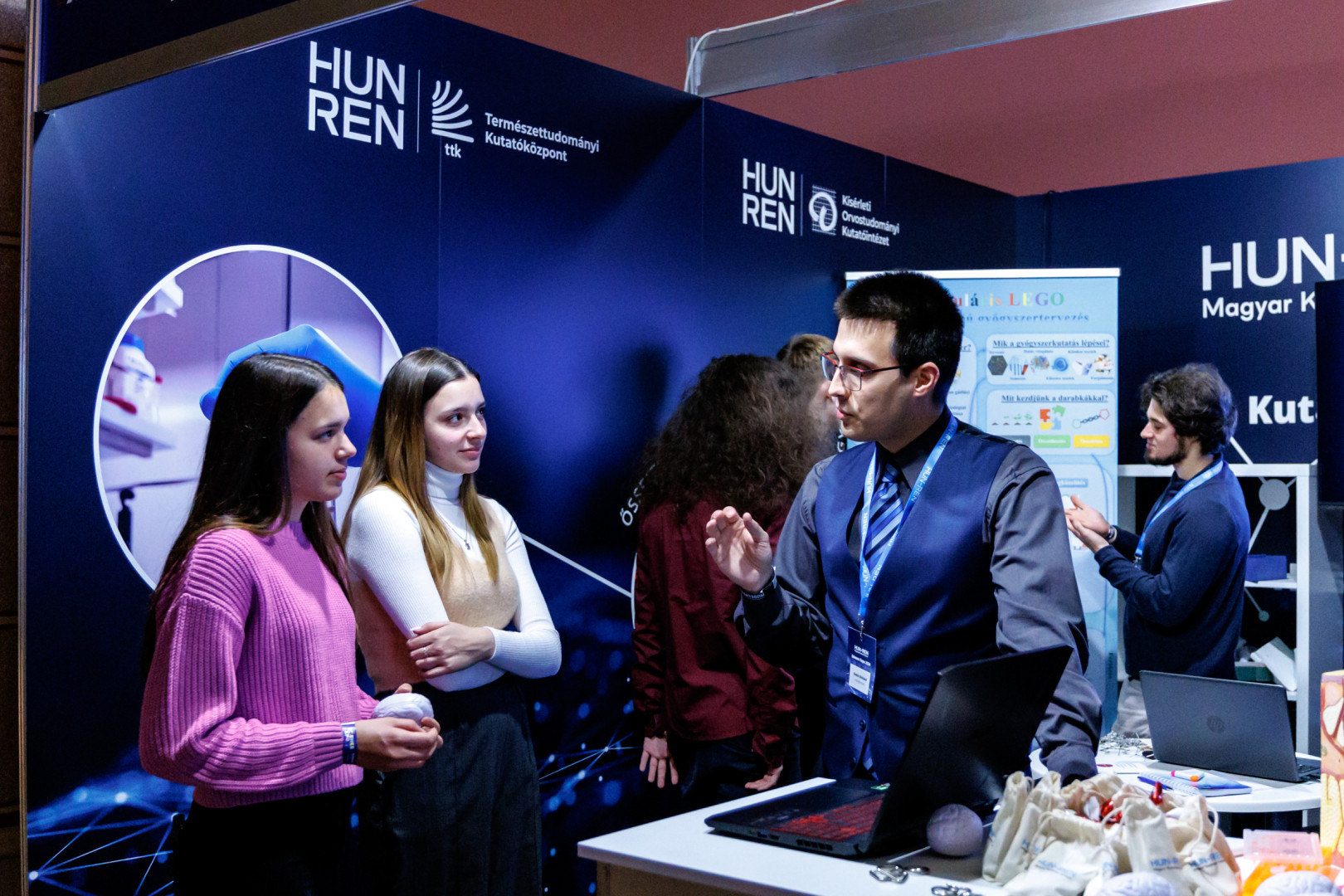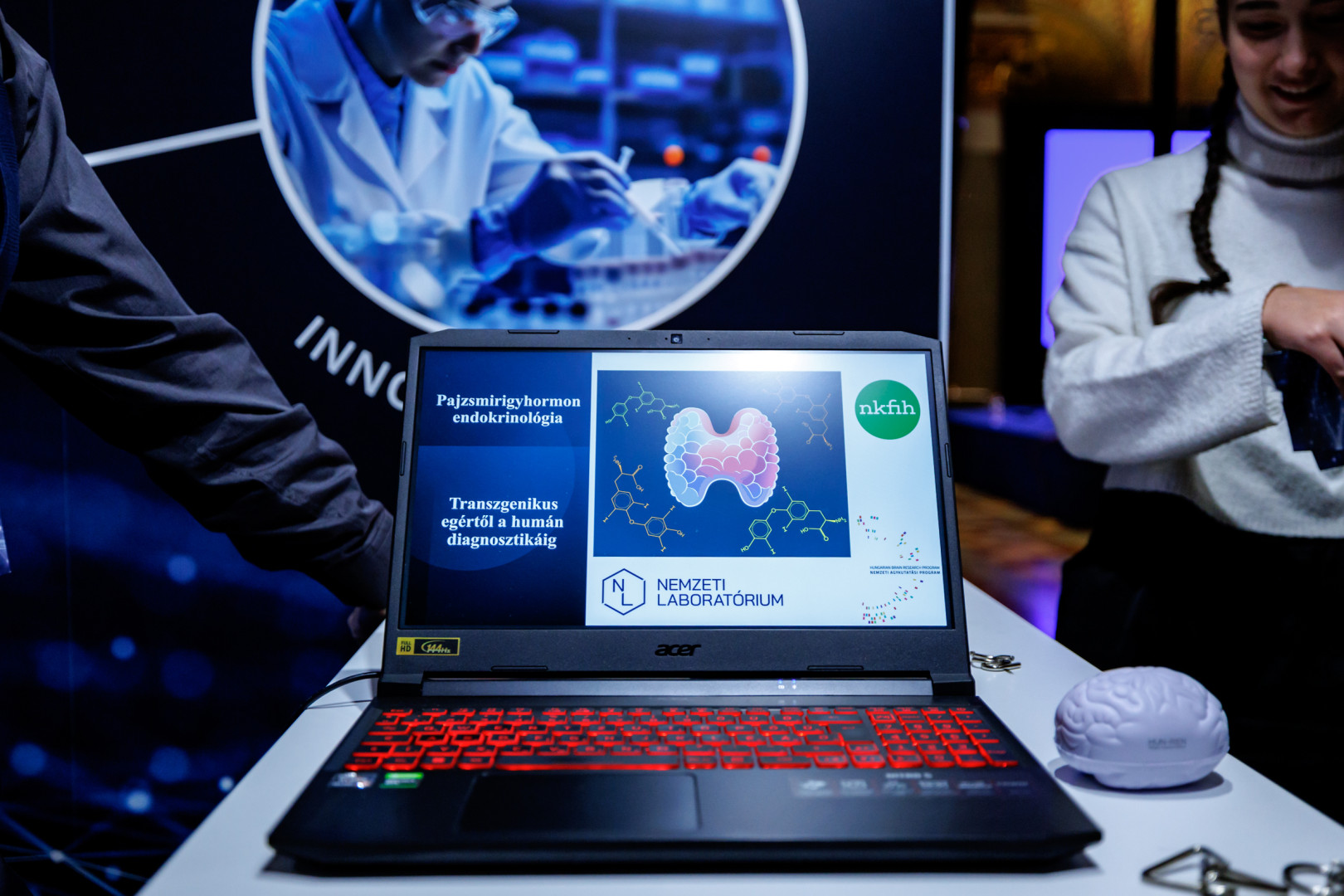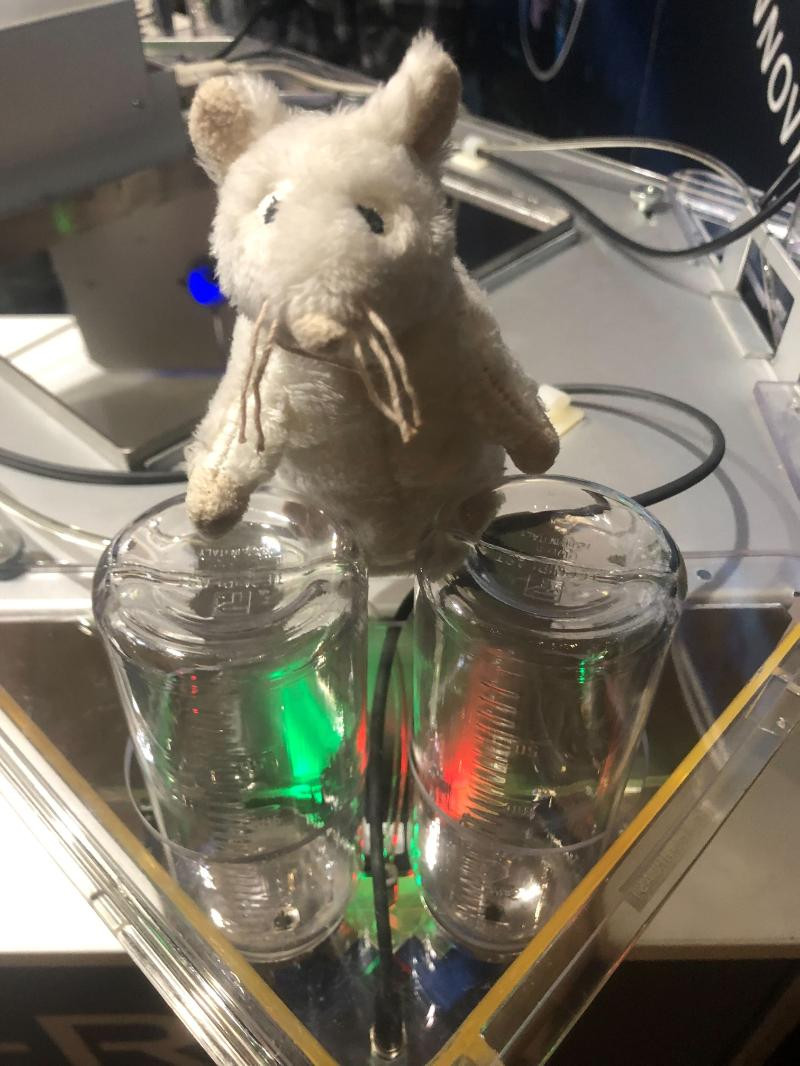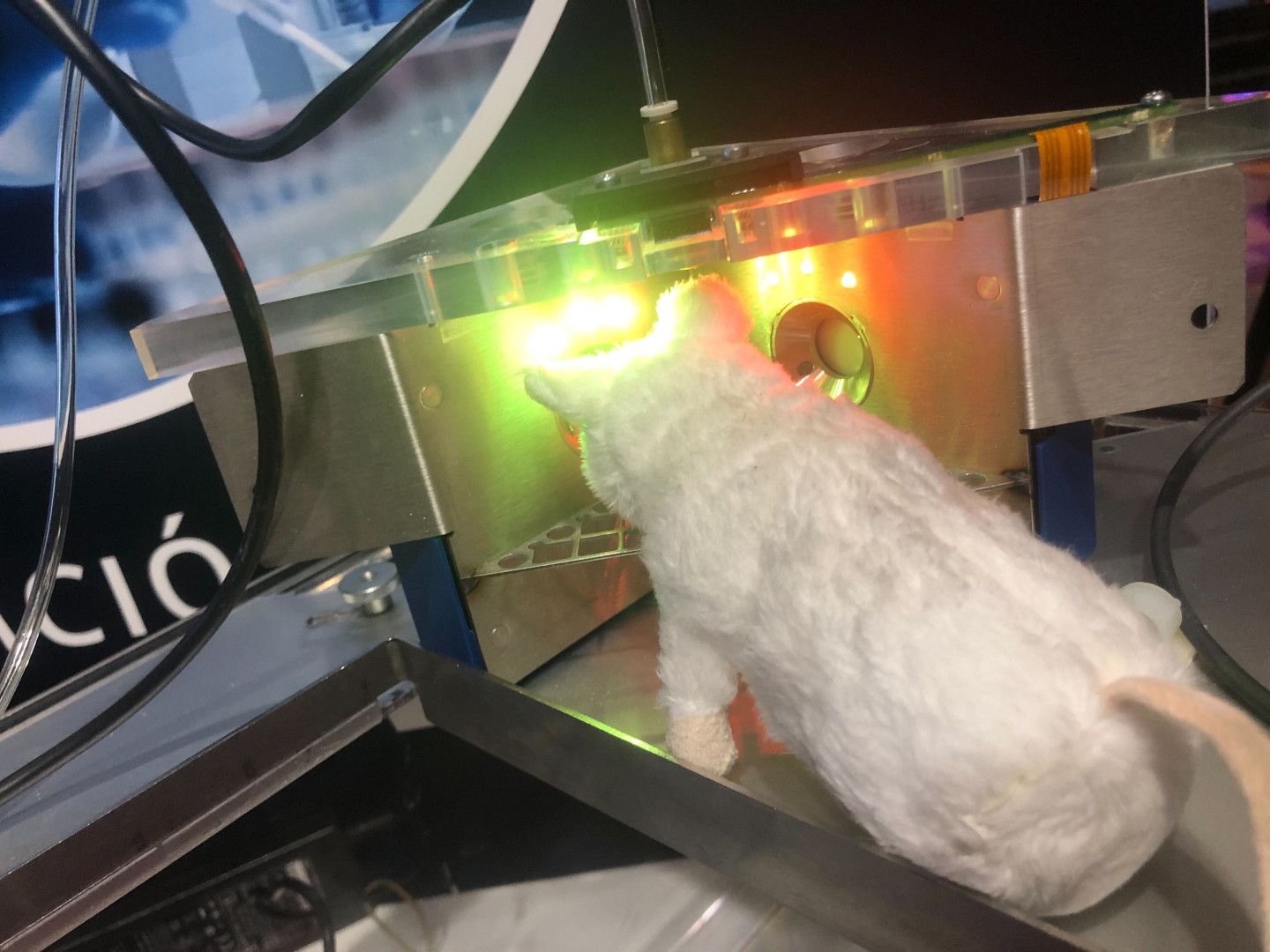Responsibility and expectations. World Science Forum and Science Expo
It is now 25 years since the MTA, with the support of UNESCO in particular, organized the "World Conference on Science for the 21st Century: a New Commitment", which has become the successor to the biennial World Science Forum (WSF) series, with Budapest hosting every second event. From 20-24 November 2024, the Forum, entitled "Science and Policy in a Time of Global Transformation", was held in the exceptional venues of the Hungarian Academy of Sciences, the Vigadó, and the Kempinski Hotel Corvinus, where it was possible to meet with invited policy-makers, researchers and science journalists. However, the Science Expo, a joint project of the MTA, the National Innovation Agency, and the Ministry of Culture and Innovation, held in the Romanian Hall of our magnificent Museum of Fine Arts, was open to all for free.
Although the WSF did not have a speaker from KOKI this time, some of the thoughts expressed there are worth recalling.
The speakers of the first plenary session, Trust in Science, from different countries and with different scientific backgrounds and knowledge bases, spoke in full harmony not only about the importance of science, especially basic research but also about the responsibility of researchers and society for the future and the need for everyone to do something. In the words of Lidia Brito (UNESCO), "Science is our shared responsibility. We must make science accessible to all through open science", or the urgent plea of Tamara Elzein from Lebanon, who gave the keynote speech, "We must not only trust in science but also believe in it, so that we can build peace and develop applications for humanity", was understood by all."
Finally, let me add two more thoughts from Dr. Elzin's lecture: everyone should be aware that science is a process in which change is only the constant; a researcher should be instilled with the peace of mind that knowledge is much easier to acquire than wisdom, especially when we are talking about society.
I cannot recall a conference in a short time where, after the first session, I thought that what had been said made it worth going.
The role and responsibility of science journalists in the dialogue between researchers and society was a recurring theme every day. There is a shortage of well-trained, credible professionals who can interpret scientific findings in a way that is understandable to non-experts, they noted. Maria Leptin, President of the ERC, herself an excellent communicator, said in her presentation that while it would be good if all researchers were involved in communicating knowledge, some of the best ones are not up to the task. And in this case, she went on, they should be left to do what they do best. A wise thought. . .
Leaving the ornate halls of the Vigadó, let us enter the Romanian Hall of the Museum of Fine Arts, where we were active participants and exhibitors. After several changes, several consultations, and therefore with uncertain feelings, between 21 and 23 November, representatives of three research groups of our institute appeared to present, on three consecutive days, alternately, something of their research, which they thought to be the most relevant and the most suitable to be presented to the general public.
Eva Mikics' group bravely undertook the first day. They arrived with a huge suitcase containing a device called IntelliCage. This is a device that measures the learning and memory abilities of mice and certain aspects of their emotional functioning. On the suggestion of Éva, Róbert Dániel Maróthy PhD student, who reported on their experience, said.
Robi:
- In addition to HUN-REN KOKI, several members of the research network, but also other institutions and institutes were present at the Science Expo as exhibitors or speakers.
The booth "Innovative Drug Discovery" was shared with HUN-REN RTD. We presented our automated teaching system IntelliCage and video clips of other methods and behavioural tests we use. From TTK, you could learn about drug development and research using stem cells. In addition to our exchanges of ideas, we tried together to present the technologies and processes used in potential drug development as a potential drug could be selected and tested. As the two areas were cleverly linked, we were able to smoothly take over from one interested party to another, hopefully providing an even greater experience and transferring more knowledge.
We talked to our visitors not only about IntelliCage, but also about how research is done. We also received a lot of questions about our video running in the background, which showed the different phases of preclinical modeling of psychiatric disorders and diseases through a variety of techniques, from behavioral testing to microscopic analysis.
It was surprising to see that some students were not only interested in neuroscience but also specifically in the work going on at KOKI. So, as a teaser, I offered the Grey Matter blog written by our colleague Attila Gulyás, which is also available on our institute's website, and for more seriously interested Hungarian and foreign students, I also offered the topics on the website.
Overall, I was satisfied with the exhibition. Most of the visitors were open-minded and we were able to discuss certain topics (e.g. animal experiments, animal protection, alternative options in research). Almost every stand at the exhibition presented some interesting topic.
We were also lucky to meet the press and, together with my colleague, we were able to comment to HUN-REN on the researcher training taking place at KOKI.
On the second day of the Expo, "From transgenic mice to human diagnostics", a successful presentation was given by Richárd Sinkó postdoc from the group of Csaba Fekete and Balázs Gereben, on thyroid hormone homeostasis. Balázs Gereben took over the baton from him before the gala dinner and was visited at the stand by Minister Balázs Hankó.
As their conversation was not recorded, we'll stick to what Richárd Sinkó, who gave an extraordinary all-day performance, shared with us: "At the Expo, we wanted to present material that is not limited to our narrow field of expertise but can be placed in a more general framework, in line with the innovative spirit of the event. Our patent-pending method for measuring tissue thyroid hormone homeostasis, born from the Human Hair follicle Project, and our patented THAI mouse, which is also used to validate it, seemed to be suitable for this.
We shared our stand "Innovative drug discovery" with HUN-REN RTD. We were not far from the stage, I could sneak a peek at the presentations. But only sneakily, because we had many more visitors than we expected on Friday during the day. Although we received HUN-REN trinkets from Ágnes Illyés after the start (thank you very much), and there were still some leftover snippets of KOKI, we didn't need them to lure the stragglers to our stand, because they came on their own! They kept coming in small groups. Most of them were bright-eyed, knowledge-hungry high school students, sometimes accompanied by a teacher. Many of them wore T-shirts emblazoned with the insignia of the National Academy of Science. They performed experiments on stage, they were really good. They listened carefully, asked good questions, and were very interested. In the second half of the day, there was a good turnout of families with young children, older visitors, and even foreign tourists who came to visit us in the middle of their visit to the museum.
From what I saw of the event, I think it went well. There were a lot of visitors who were so interested and seemed to me to enjoy themselves. Unfortunately, I was unable to attend the evening gala, and our group leader Balázs Gereben replaced me at the stand."
On the final Saturday, Írisz Szabó postdoc researcher, and Réka Kispál TDK student from Balázs Hangya's group presented an automatic teaching system. In this system, mice can learn continuously, without human intervention, thus under lower stress levels and faster. Visitors were able to try the same sequential learning task - following a sequence of LED flashes - that animals learn.
Réka Kispál's report:
- The Science Expo was an exciting event, full of curious people interested in innovations. Our automated mouse teaching system was a huge success, with hardly an empty stall at our stand. There was almost always a small crowd at our booth, sometimes we could hardly handle the many visitors. In particular, we were visited by many enthusiastic young people. They enjoyed the exercise very much and asked us lots of questions about the research. Many high school students also asked us about their options for further education if they wanted to become researchers. There was one parent who tried the scheme with her child first and then returned on her own to try the more difficult adult version because she liked it so much.
The whole event confirmed to me that it is worth creating and presenting projects like this because they can be more than entertainment and also awaken a real desire for knowledge in people.






